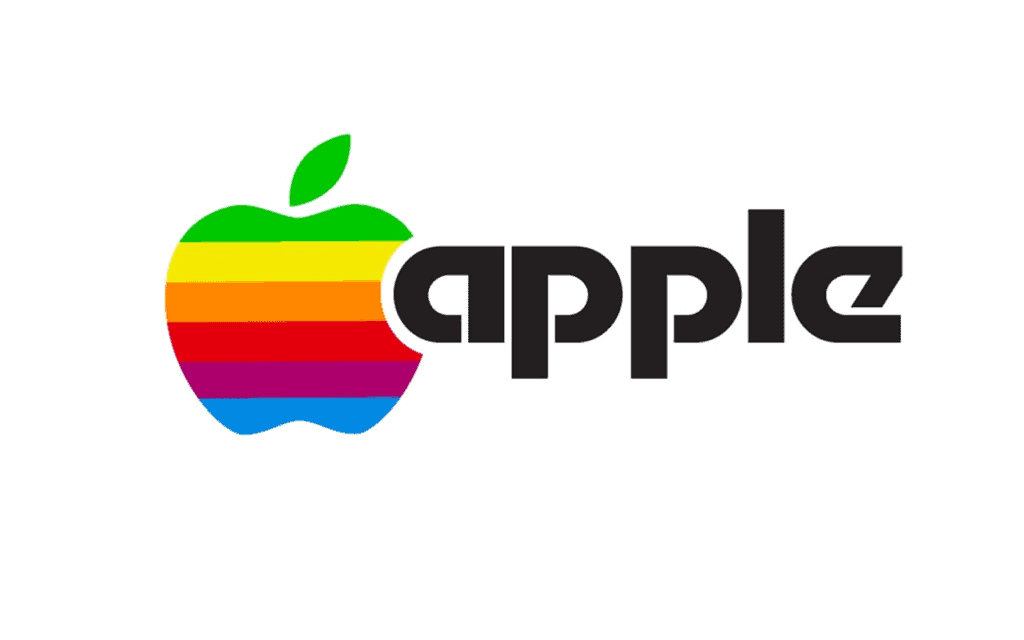Rebranding Exercise: A Strategic Approach to Business Growth
As we approach the new year, companies across industries realise that standing out in today's crowded marketplace requires a distinct and memorable brand identity. For many businesses, periodic rebranding efforts are becoming essential to stay relevant amid shifting consumer preferences and new competitive threats.
Rebranding is all about revamping and reinvigorating your company's visual branding, messaging, and overall identity. It goes far beyond just slapping on a trendy new logo or name. An impactful rebrand requires taking a step back to re-evaluate your core values, target audience, and long-term vision. The goal is to create a cohesive brand experience that resonates emotionally with customers and sets them apart.
Rebranding can re-energize a tired brand image, open new growth opportunities, and form deeper connections with existing customers. It's about signalling that your company is evolving and embracing the future, not clinging to the past. For example, McDonald's successful rebranding in the early 2000s helped transform public perception of the fast food giant from a synthetic and outdated brand to one focused on healthy, high-quality ingredients.
As today's leading brands know, standing out requires consistent innovation. Rebranding helps companies align their identities with shifting consumer tastes and market trends. Rather than being seen as a passive act, rebranding strategically demonstrates that your brand has its finger on the pulse and is willing to reinvent itself. In our fast-paced world, brand identities cannot remain static – they must adapt or risk irrelevance.
Table of Contents
Understanding a Rebranding Exercise

A rebranding exercise is a strategic process that involves changing various brand elements to create a new identity and stand out in the market. This can include changing logos, brand names, packaging, and marketing focus. Companies may undertake a rebranding exercise to keep up with evolving market trends, align with changes in business strategy, or refresh and revitalise their brand image. The process can be categorised into three types: brand refresh, partial rebrand, and complete rebrand, each requiring varying degrees of change and effort.
For example, Starbucks, a global coffee chain, underwent a rebranding exercise in 2013. The company updated its logo by removing the text and borders, leaving only the iconic green mermaid. This change aimed to simplify and modernise the logo, reflecting Starbucks' evolution as a global brand and its focus on quality coffee. The refreshed logo was well-received by customers, helping Starbucks strengthen its brand presence worldwide.
Besides changing visual elements, rebranding can also involve updating the brand's messaging and positioning. For instance, a company might shift its brand messaging to align with new market trends or to resonate better with its target audience. It might also update its positioning to differentiate from competitors and create a unique brand identity. Such changes can significantly impact the brand's perception and influence consumer behaviour and business performance.
Reasons for Undertaking Rebranding

Companies undertake a rebranding exercise for various reasons. These include loss of relevance in the market, mergers and acquisitions, a negative brand image, loss of market share, confusion with another brand name, or failure to impact the market. Other red flags that signal the need for rebranding include changes in products or services, expansion or pivot to a new audience, poor performance of current branding, desire to distance from a bad reputation, lack of differentiation from competitors, and changes in the company structure.
Volkswagen provides an apt example of rebranding in the face of a negative brand image. Following a scandal in 2015 over manipulated emission tests, the automaker was in dire need of a brand overhaul to regain trust and restore its reputation. Volkswagen undertook a comprehensive rebranding exercise, including a new logo and a shift in messaging to emphasise sustainability and transparency. This rebranding initiative was a strategic move to distance the company from the scandal and reposition itself as a leader in clean mobility. The rebranding efforts have helped Volkswagen improve its image and regain customer trust.
Another example is the rebranding undertaken by Burberry. Over the years, Burberry's iconic check pattern had been widely counterfeited, diluting the brand's luxury image. To restore its premium status, Burberry undertook a rebranding exercise that included updating its logo, revising its product lineup, and launching a new marketing campaign. The rebranding helped Burberry regain its luxury positioning and attracted a new generation of high-end consumers.
The Rebranding Process

The rebranding process requires careful planning and execution to be successful. It involves several stages, including identifying the reasons for rebranding, conducting market research, involving stakeholders, setting clear objectives, and implementing the rebranding changes. Key steps include recruiting a dedicated rebranding team, evaluating what's currently working and what isn't, testing target audiences, analysing competition, rethinking brand personality and core values, redoing problematic elements, and planning a successful launch.
A classic example of the rebranding process is Old Spice. Once known as a brand for older generations, Old Spice repositioned itself to appeal to a younger demographic. The company conducted extensive market research, revamped its packaging, introduced new scents, and launched a groundbreaking advertising campaign featuring the “Old Spice Guy.” The rebranding efforts resulted in a significant turnaround for the brand, attracting new customers and revitalising its image.
However, rebranding is more than just a one-size-fits-all process. Each company has unique needs and challenges, and the rebranding process must be tailored accordingly. It's crucial to understand the brand's current strengths and weaknesses, the market landscape, and the needs and preferences of the target audience. Rebranding should also align with the company's strategic objectives and core values. Moreover, it's crucial to communicate the changes effectively to customers and stakeholders to ensure a smooth transition and avoid confusion.
Planning for Rebranding

Planning for rebranding is a crucial step in the process. A hasty rebranding exercise can lead to financial damage and loss of reputation, making careful planning and consideration imperative. The rebranding strategy should have a compelling reason, convey continuity while embodying new principles or values, and be based on a genuine need and a well-thought-out market strategy.
The example of Coca-Cola's “New Coke” launch in 1985 illustrates the importance of careful planning. Despite extensive market research, the new formula was met with significant backlash from consumers, leading Coca-Cola to revert to its original recipe within a few months. This failed rebranding attempt highlights the importance of understanding customer preferences and maintaining core brand values.
The planning phase should also involve thorough research and analysis. This includes understanding the current market trends, competitive landscape, and customer preferences. Gathering insights from various sources, including market research, customer feedback, and sales data, is crucial. This information can help identify opportunities for differentiation and guide the development of the rebranding strategy.
Investment in Rebranding

Investing in a rebranding exercise involves allocating significant time, money, and resources. However, the potential benefits of a successful rebranding exercise can far outweigh the initial costs. These benefits include increased brand recognition, attracting new customers, and fostering customer loyalty. Rebranding also provides a strategic opportunity for business growth and differentiation.
The story of Apple's rebranding under the leadership of Steve Jobs is a perfect example of a successful investment in rebranding. In the late 1990s, Apple was on the brink of bankruptcy. However, through a comprehensive rebranding effort, including a new logo, a simplified product lineup, and a renewed focus on innovation and design, Apple transformed into one of the world's most valuable and influential companies.
However, it's important to note that the success of a rebranding exercise is not guaranteed and depends on several factors. These include the effectiveness of the rebranding strategy, the execution of the rebranding changes, market conditions, and customer response. Therefore, companies should carefully consider the potential risks and rewards before investing in rebranding.
Rebranding Strategies for Professional Services
Professional services firms can also benefit from rebranding strategies tailored to their needs and characteristics. A successful rebranding system for professional services firms requires a deep understanding of the firm's business objectives, target clients, and competitive landscape. It involves several steps, including conducting thorough research, developing a compelling brand positioning and message, building a solid brand identity, and creating a powerful online presence.
To illustrate, consider the case of a law firm specialising in intellectual property law that decides to rebrand to attract more clients from the tech industry. The firm can start by researching to understand the specific needs and preferences of tech companies seeking legal services. Based on this research, the firm can develop a brand strategy that highlights its expertise in intellectual property law and positions itself as a trusted partner for tech companies.
The rebranding process might involve updating the firm's visual identity, redesigning its website to showcase relevant case studies and client testimonials, and developing targeted marketing materials. This strategic approach to rebranding can help the firm differentiate itself from competitors, attract new clients, and achieve its business objectives.
However, a successful rebranding strategy continues after the launch of the new brand identity. It also requires ongoing efforts to build the brand and maintain its relevance. This includes continuous market research, regular branding elements updates, and consistent brand message communication. By taking a strategic and long-term approach to rebranding, professional services firms can enhance their market position, strengthen their client relationships, and drive business growth.
Successful Rebranding Examples

There are many examples of successful rebranding initiatives that have resulted in significant improvements in brand recognition, customer perception, and business performance. For instance, Jones CPA Group, a professional services firm, repositioned itself as a great communicator, helping it stand out among competitors and attract more clients. S&ME, a civil engineering firm, emphasised versatility as a core value in its rebranding strategy, resonating with its target audience and enhancing its market position.
Another example of successful rebranding is Target, a major retailer in the United States. In the early 2000s, Target embarked on a rebranding initiative to differentiate itself from other mass-market retailers. The company updated its store design, introduced exclusive designer collaborations, and launched a memorable marketing campaign with the tagline “Expect More. Pay Less.” This rebranding exercise helped Target attract a younger, more fashion-conscious demographic and solidify its position as a leading retailer.
Successful rebranding initiatives change a brand's visual elements and reinvent its market positioning and customer perception. They require a clear understanding of the brand's current strengths and weaknesses, the market landscape, and the needs and preferences of the target audience. Moreover, they must align with the company's strategic objectives and core values. By taking a strategic and comprehensive approach to rebranding, companies can transform their brand image, differentiate themselves from competitors, and achieve long-term business success.
The Launch of a Rebrand

The launch of a rebrand is a critical phase in the rebranding process. It involves unveiling the new brand identity and communicating the changes to customers, stakeholders, and the broader market. A successful rebrand launch requires careful planning and execution. It's essential to frame the launch as a story and incorporate elements such as teasers, previews, events, and contests to generate hype and anticipation.
Airbnb's rebrand launch in 2014 serves as an exemplary case. Airbnb unveiled a new logo and brand identity for the rebranding initiative. The launch was accompanied by a comprehensive marketing campaign that included a video showcasing the stories of Airbnb hosts and guests. This storytelling approach created an emotional connection with the audience and highlighted Airbnb's commitment to creating unique and meaningful travel experiences. The rebranding launch generated significant buzz and helped Airbnb solidify its position as a leading platform for alternative accommodations.
However, it's important to note that a successful rebrand launch requires more than just a one-off event or announcement. It should be viewed as a continuous process that involves ongoing communication and engagement with the target audience. This includes regular updates on the progress of the rebranding initiative, engagement activities to involve customers and stakeholders in the process, and ongoing efforts to reinforce the new brand identity and message.
By adopting a strategic and sustained approach to the rebrand launch, companies can maximise the impact of their rebranding efforts and ensure a smooth transition to the new brand identity.
Benefits of Successful Rebranding
Successful rebranding can bring numerous benefits to a company. It can help a company connect with its target audience at an emotional level, differentiate from competitors, and stand out in a crowded marketplace. Rebranding can also provide a strategic opportunity for business growth and differentiation. By revitalising their brand image and aligning it with current market trends and customer preferences, companies can enhance their market position, attract new customers, and boost their business performance.
A case in point is Domino's Pizza. In the late 2000s, Domino's undertook a rebranding exercise focused on improving the quality of its pizza and the overall customer experience. The company acknowledged its past shortcomings, significantly enhanced its recipes and cooking process, and communicated these changes through a transparent and engaging marketing campaign. This rebranding effort was highly successful, leading to a significant increase in sales and customer satisfaction.
However, the benefits of rebranding extend beyond just immediate financial gains. Rebranding can also enhance a company's reputation, strengthen its relationship with customers and stakeholders, and create a strong and sustainable brand identity. Moreover, it can provide a company with a competitive edge in the market, helping it stay ahead of trends and adapt to changes in the business environment. Therefore, companies should view rebranding as a cost and a strategic investment that can yield significant long-term benefits.
Conclusion: Rebranding as a Strategic Decision
Rebranding is a strategic decision that can profoundly impact a company's brand identity, market position, and business performance. It involves changing various brand elements to create a new identity and differentiate it from competitors. Undertaking a rebranding exercise requires a clear understanding of the reasons for rebranding, careful planning, and effective execution. A successful rebranding initiative can increase brand recognition, customer perception, and long-term business growth.
However, rebranding is not a decision to be taken lightly. It requires a significant investment of time, money, and resources. It also involves managing the risks and challenges of changing a brand identity, such as potential customer confusion or backlash. Therefore, companies should carefully consider their rebranding strategy, involve their stakeholders, and ensure the initiative aligns with their overall business strategy and market conditions.
In conclusion, rebranding is a strategic approach to business growth and differentiation. It allows companies to reinvent their brand, connect with their target audience, and stand out. By investing in rebranding, companies can create a strong and sustainable brand identity, enhance their market position, and achieve long-term business success.
